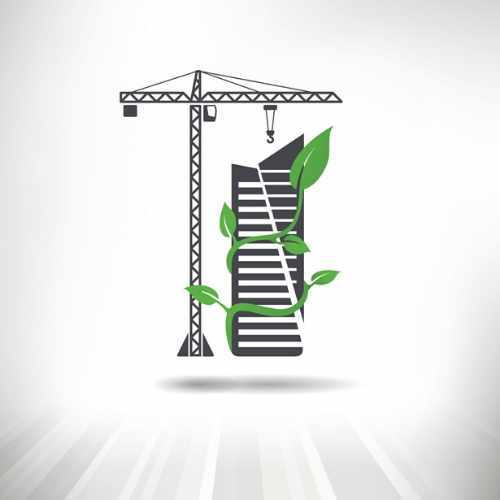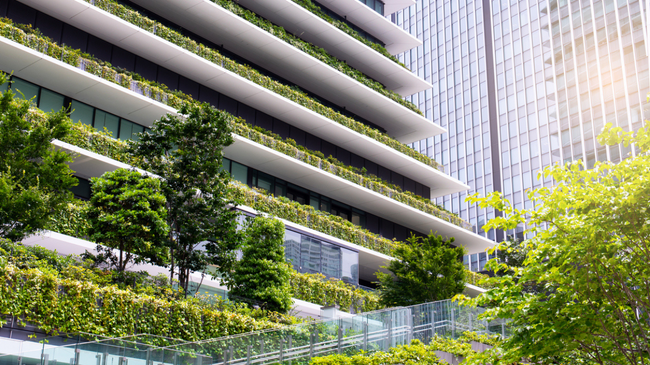All About Circular Construction
0%
As sustainability practices in construction have continued to become more refined over the years, contractors have become more skilled at "closing the construction loop": finding ways to build better with fewer materials, reducing the footprint of buildings across their lifecycle, and fighting the effect of urban heat islands. These concepts are not new—ESG, decarbonization, and converting materials into new alloys or energy sources are just a few signs of innovation—but together they form a circular construction strategy that is better for business, the environment, and the municipalities they serve. Since construction and demolition of buildings accounts for about one-third of global material consumption and waste, strategies like circular construction are much-needed.

What Are The Benefits of Circular Construction?
Rather than follow the linear construction process of "take-make-waste," wherein resources and used and then disposed of, a circular construction model (also known as circular economy) seeks to keep resources in use for as long as possible to extract maximum value while recovering and regenerating materials at the end of their service life. Rather than dispose of materials, circular construction concepts reuse, share, repair and refurbish materials that may still have value.
There are 11 key advantages to circular construction, and these main points are factors in developers choosing to go a "greener" route in their building processes:
Reduction of carbon footprint
Energy saving
Waste reduction
Improvement of indoor air quality
Durability and longevity
Biodiversity and environmental integration
Comfort and well-being of the occupants
Flexibility and modularity
Aesthetics and innovative design
Economic valuation
Environmental awareness
The benefits of circular construction encompass a range of advantages that promote sustainability and efficiency.
These include a substantial reduction in carbon footprint, thanks to eco-friendly materials and practices, as well as energy saving through efficient design and resource management.
Waste reduction is another key aspect, as the approach prioritizes reusing and recycling materials. Circular construction's focus on sustainability also enhances indoor air quality, contributing to healthier living environments.
Durability and longevity are ensured, resulting in structures that withstand the test of time, biodiversity, and environmental integration are fostered, aligning the construction with its surroundings.
Occupants' comfort and well-being are prioritized, while the flexibility and modularity of circular construction allow for adaptability over time. Aesthetics and innovative design challenge conventional architectural norms, while economic valuation benefits from reduced resource consumption and long-term viability.
Ultimately, circular construction embodies environmental awareness, setting a precedent for conscientious building practices.

What is an Example of Circular Economy in Construction?
Cement kilns perfectly exemplify a circular economy within the construction industry, serving as a viable solution for the secure and sustainable disposal of waste. This presents a valuable alternative to the utilization of fossil fuels which are frequently used in incineration and landfill methods. Moreover, the process of cement production inherently repurposes waste minerals to function as a substitute for raw materials, effectively optimizing material reuse on a broader scale.

Examples of the Circular Process
Frequently in circular processes, a common practice involves maximizing the reuse of products and raw materials to attain the highest level of environmental consciousness and efficiency in production. A notable illustration of this is found in Denmark's circular social housing initiative, where an impressive 90% of the construction materials can be disassembled and resold without losing their value. This Danish project also employs innovative materials such as cork, recycled newspapers, used car tires, and granules, effectively reducing its carbon footprint during construction.







